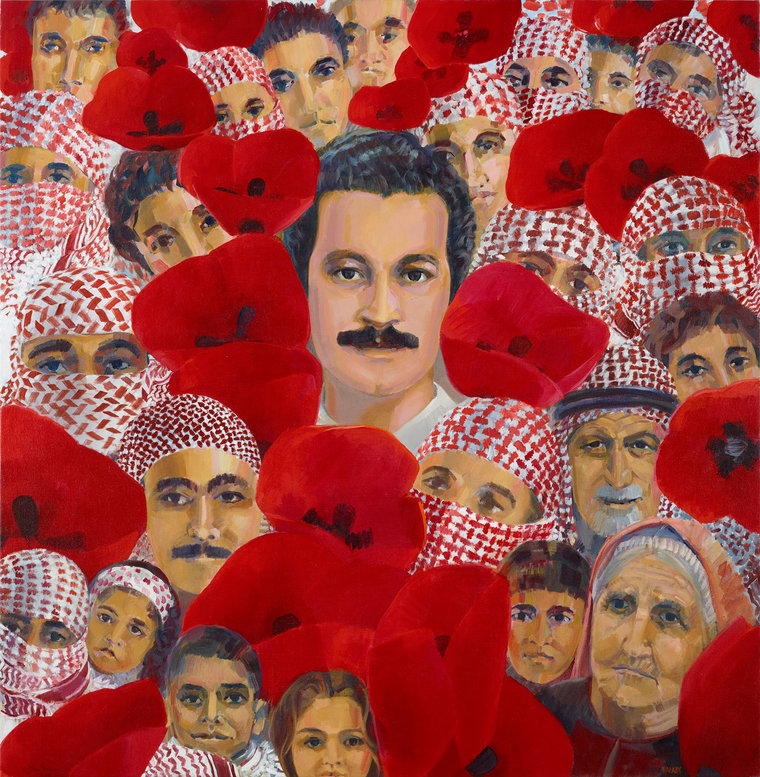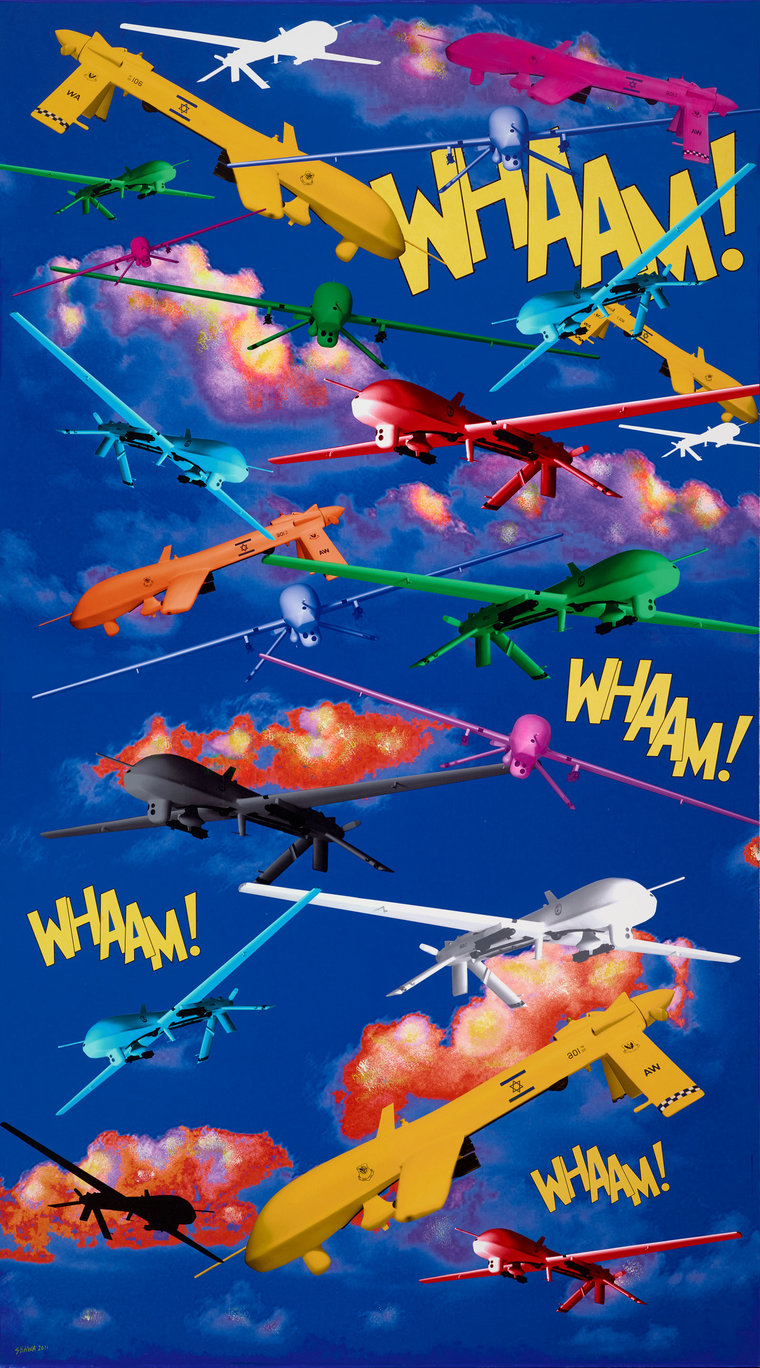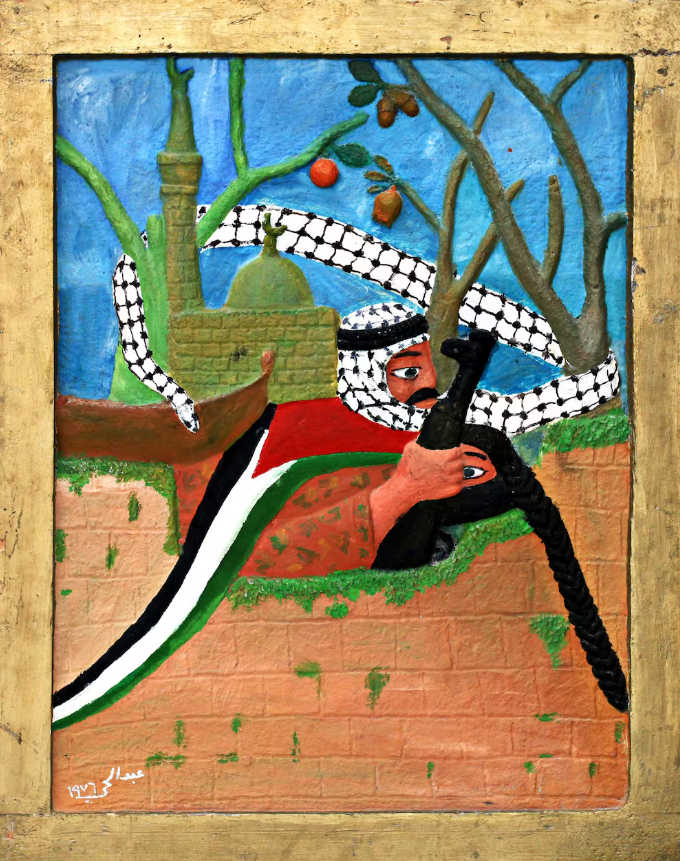Samia Halaby, a leading abstract visual artist, has not only pushed the boundaries of abstraction but has also contributed significantly to the understanding of art’s intersection with culture and society. Born in 1936 in Jerusalem, Palestine, her journey from the Middle East to the United States has shaped her artistic vision, which continues to captivate audiences worldwide.

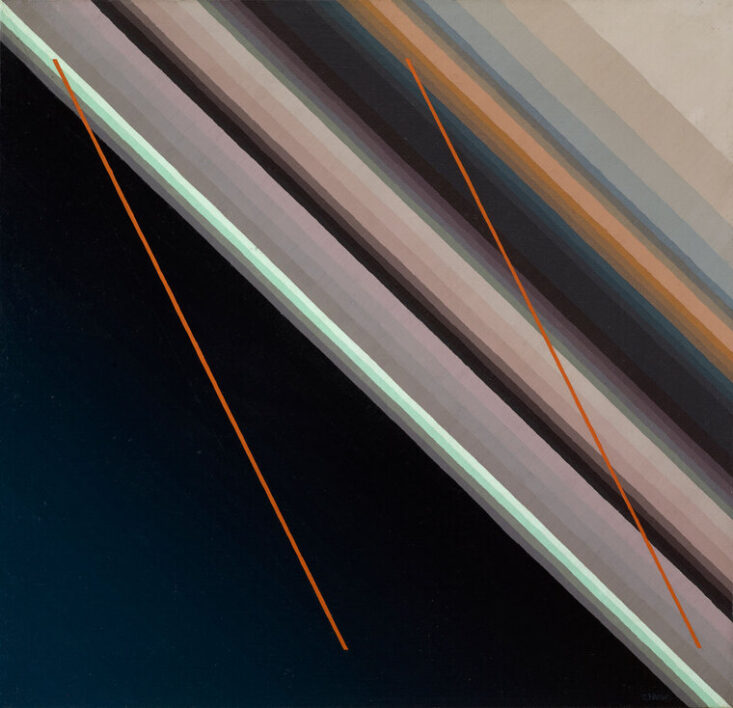
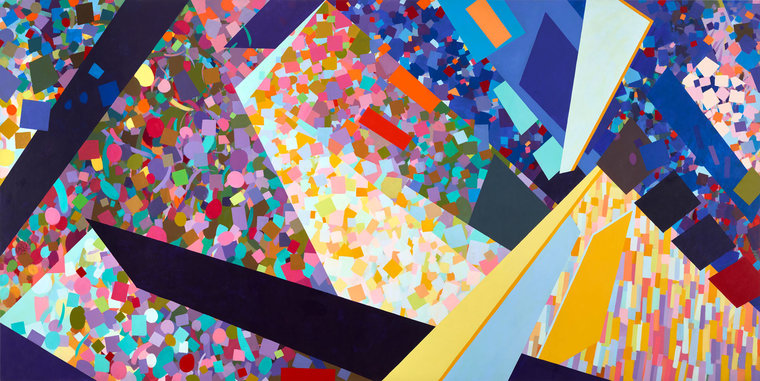
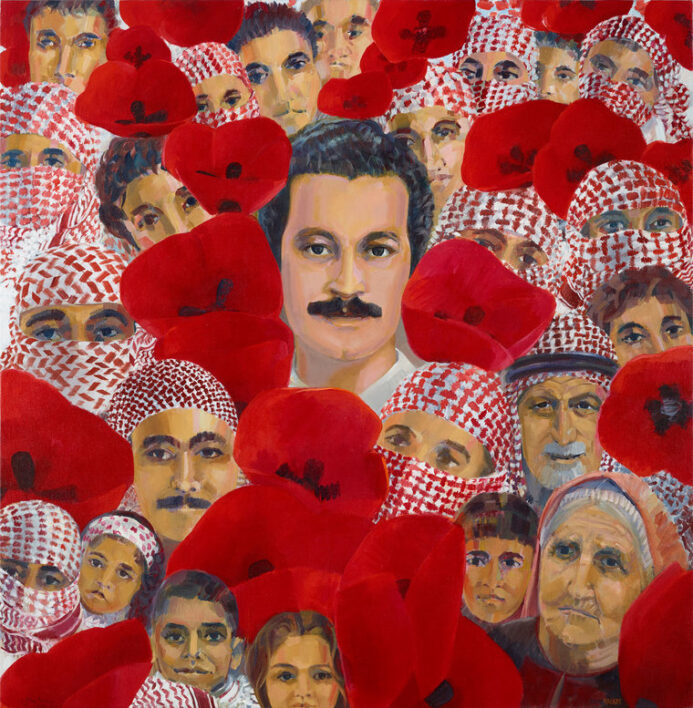


Halaby’s early years were marked by upheaval, as her family relocated to Lebanon during the Nakba in 1948. Settling in the United States in the early 1950s, Halaby pursued higher education, obtaining degrees in design and painting from prestigious institutions such as the University of Cincinnati, Michigan State University, and Indiana University.
Her academic journey laid the foundation for her illustrious career, which included teaching positions at renowned institutions such as the University of Hawaii, the Kansas City Art Institute, and Yale University, where she implemented innovative studio art programs.
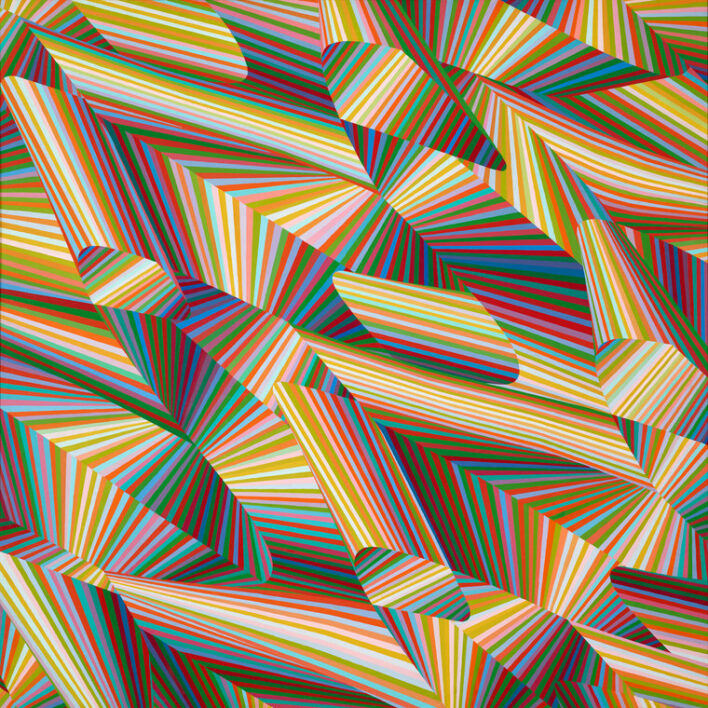


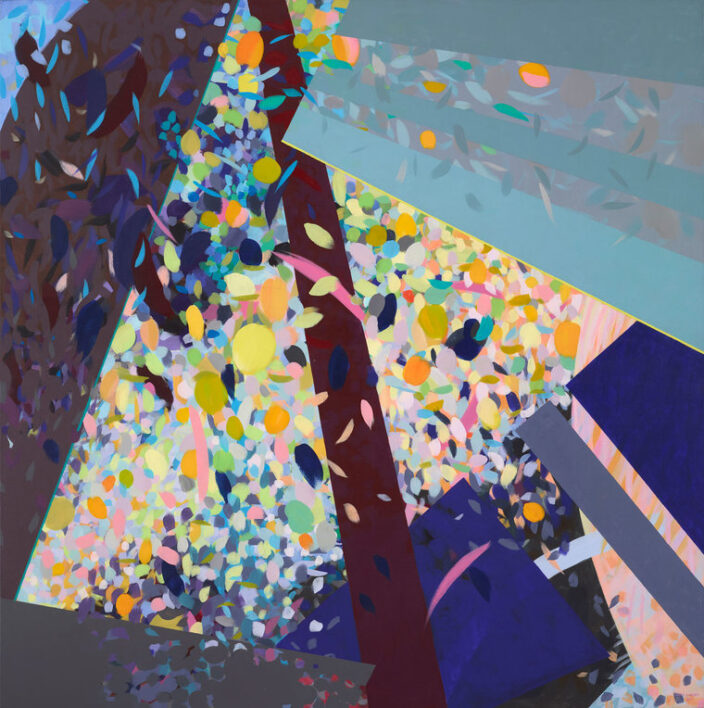
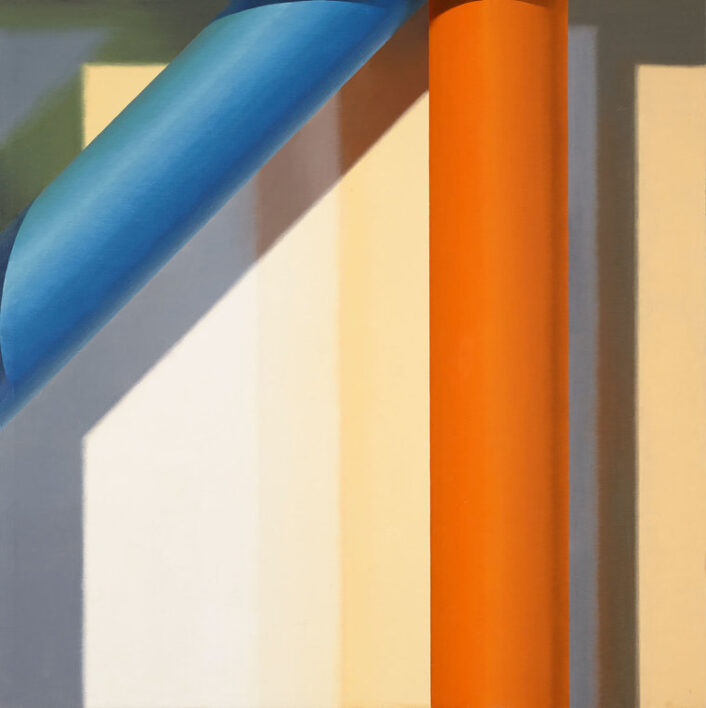

Halaby’s artistic exploration transcends personal or political narratives, instead focusing on analytical and intellectual pursuits. Influenced by both Western abstract art movements and the rich heritage of Islamic art, she developed a unique aesthetic that blends scientific inquiry with artistic expression.
Her travels across the Middle East, studying historic architectural landmarks, exposed her to the intricate beauty of Islamic art’s abstract representational traditions. Inspired by the geometric patterns and polychromatic mosaics of sites like the Dome of the Rock in Jerusalem, Halaby incorporated these elements into her work, enriching her visual vocabulary.
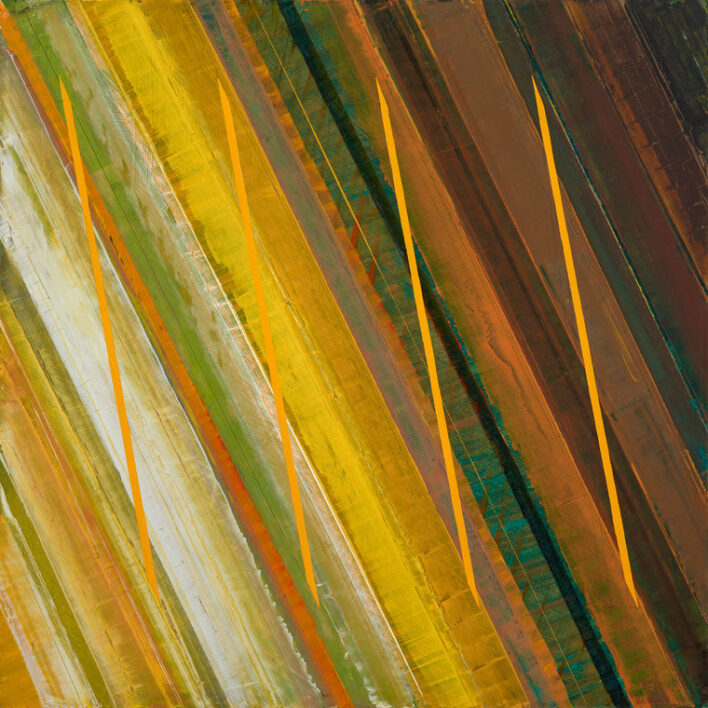

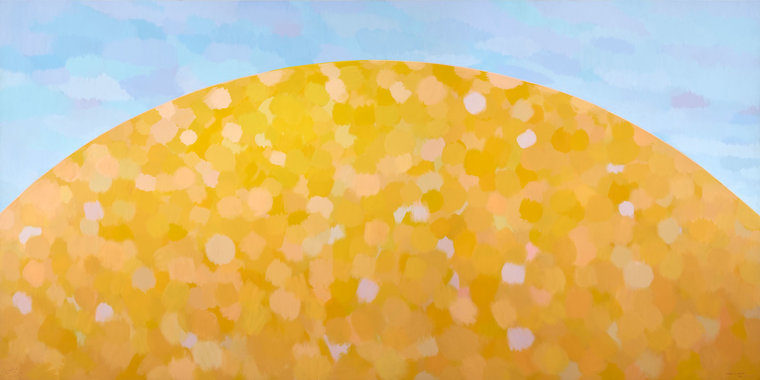
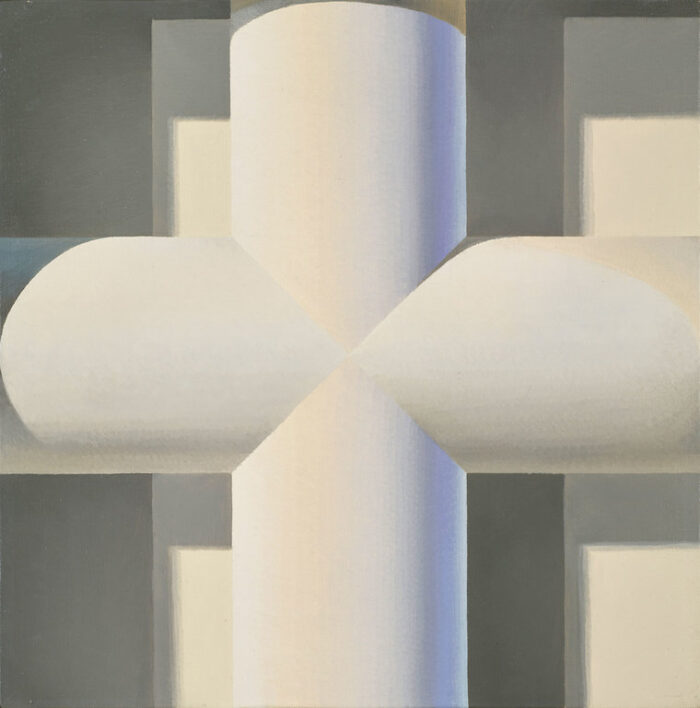

Halaby’s engagement with Western abstract art, particularly movements like Suprematism, Constructivism, and Bauhaus, further shaped her artistic sensibilities. Drawn to artists like Kazimir Malevich and Olga Rosanova, she embraced their emphasis on design and materiality, integrating these principles into her own practice.
The 1960s to 1980s were pivotal decades for Halaby’s artistic development, during which she explored color field painting and geometric abstraction. Influenced by artists like Mark Rothko and Joseph Albers, she experimented with the interplay of color and form, creating compositions that exuded a sense of depth and dimensionality.
Her mastery of light and shadow became evident in works like “White Cross” and “Black Cross,” where she meticulously rendered geometric forms to evoke a sense of transcendence and spirituality.
In the mid-1980s, Halaby embraced new technologies, utilizing computer programming to generate digital abstract paintings and kinetic artworks accompanied by musical compositions. This interdisciplinary approach blurred the boundaries between visual and auditory experiences, captivating audiences with its dynamic interplay of form and sound.
In her later years, Halaby continued to innovate, exploring three-dimensional forms and organic compositions that defied traditional artistic conventions. Her large-scale canvases, such as “Centers of Attraction,” showcased her mastery of color and form, inviting viewers into immersive visual experiences.
Despite her focus on abstraction, Halaby’s work is not devoid of social and political consciousness. As a Palestinian artist living in exile, she has documented and celebrated Palestinian revolutionary art, shedding light on the resilience and creativity of her people.
Samia Halaby’s legacy as a progressive artist and scholar of Palestinian art continues to inspire generations of artists around the world. Through her relentless pursuit of artistic innovation and social advocacy, she has left an indelible mark on the art world, challenging perceptions and expanding the possibilities of abstraction.
Sources
Arjan. “Liberation Art of Palestine.” The Electronic Intifada, February 12, 2017. electronicintifada.net.
Arte Fuse. “Interview with Artist Samia Halaby.” Arte Fuse, February 23, 2018. artefuse.com.
Exhibit-E.com. “Samia Halaby.” Ayyam Gallery. Accessed April 16, 2020. http://www.ayyamgallery.com/artists/samia-halaby/.
Farhat, Maymanah. “Illuminated Space: In the Studio with Samia Halaby, Harper’s Bazaar Art Arabia, Spring 2017.” Academia.edu. Accessed April 16, 2020.
“From Palestine to New York and Back Again: On the Life and Work of Samia Halaby.” Arab America, May 3, 2019. arabamerica.com.
Halaby, Samia. “Samia Halaby: Five Decades of Painting and Innovation.” Amazon. Ayyam Gallery, 2010. amazon.com
Halaby, Samia. “Growing Shapes: Aesthetic Insights of an Abstract Painter: Sketchbooks, Photographs, Essays, Notes.” Amazon. Palestine Books, Inc. in collaboration with Ayyam Gallery, 2016. amazon.com.
Ink, Social. “Artist Spotlight: Samia Halaby.” Grey Art Gallery, March 19, 2020. greyartgallery.nyu.edu.
Jadaliyya. “The Science of Form: An Interview with Samia Halaby.” Jadaliyya. Jadaliyya, July 10, 2017. jadaliyya.com.
“Kinetic Computer Paintings.” [Art on the Net]. Accessed April 16, 2020. art.net.
posts, Tanya All author, and Name *. “Seeking Samia Halaby.” My Olive Roots, August 29, 2018. myoliveroots.org.
“Samia Halaby Archives.” Vogue Arabia. Accessed April 16, 2020. en.vogue.me.
“Samia Halaby: Drawings of the Kafr Qasem Massacre.” Museum, February 22, 2017. museum.birzeit.edu.
